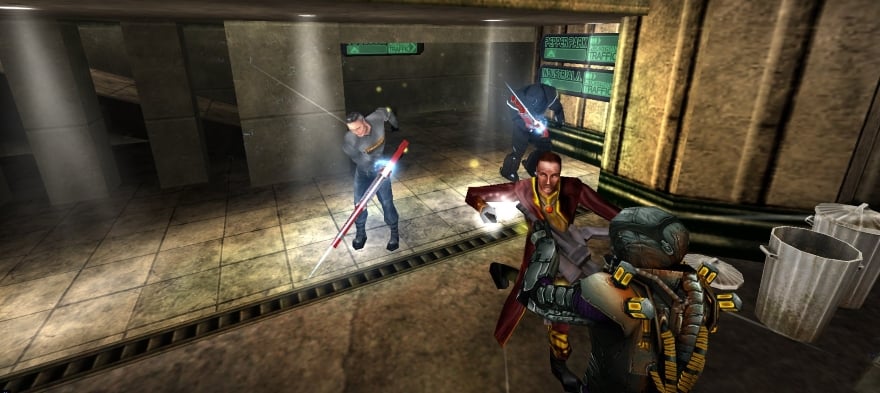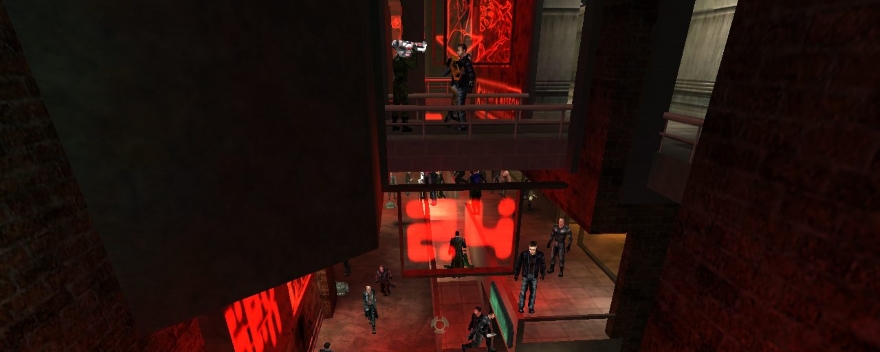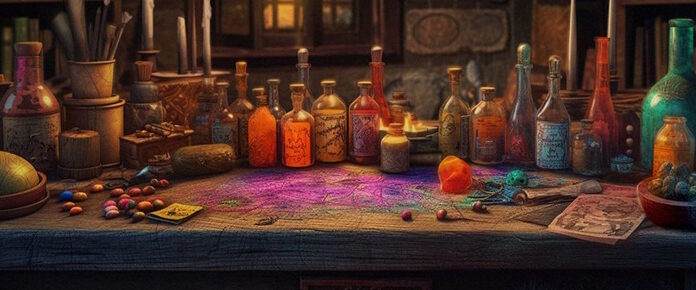
It’s the distant future. The high-tech battle armor you wear sharply contrasts with the ruins of civilization that you traverse. You spot an enemy and raise your pulse rifle, firing off shots as you strafe to cover. Technology hasn’t solved the issue of war; it’s just raised the body count.
PlanetSide 2? Nope — this is Neocron, the quite-forgettable MMOFPS from the way-back era. I like to call it “that game with the most regrettable cover art in the history of video games,” but that isn’t quite as snappy.
Going into this article, I have to admit that I previously knew absolutely nothing about Neocron other than the fact that it was a sci-fi MMO that vaguely reminded me of Anarchy Online. Oh, also the fact that nobody I know or perhaps ever will know played it. Was it just a myth? A practical joke to make us believe in an MMO phantom? Only sifting through layers of dust and grime would produce results, so I rolled up my sleeves and started digging.

The world’s first cyberpunk MMO
The origins of Neocron are all but lost in the dusty attic of the internet. That’s something I come up against a lot when covering these older MMOs, because not only was online games media in its infancy right when MMOs started to emerge but specific sites dedicated to covering these types of games did not exist. Another reason behind the lack of information is that the studio developing Neocron was in Germany and (to my knowledge) was not very vocal about promoting the title.
However, we do know that Reakktor Media began work on the project in the late ’90s, attempted to get a beta going for it in 2000 (which was delayed), and then launched the title in late 2002. The idea for the world’s first cyberpunk MMO came from then-CEO Martin J. Schwiezer, who was a massive fan of the genre. Schwiezer later worked on Reakktor’s Black Prophecy before leaving to start another company.
Neocron was to be an antidote to the emerging plague of fantasy MMOs. The studio became famous for its “No more Elves” mantra and boasted a gritty futuristic world that had more in common with Blade Runner and Judge Dredd than it did Dungeons & Dragons. The setting was one in which the world had been trashed by nuclear war. Following a devasting apocalypse, only a handful of advanced cities emerged from the wasteland. One of these is the titular metropolis of Neocron, while its adversary Dome of York became another.
Apart from its setting, Neocron was notable for pursuing a first-person shooter interface for its gameplay. Alongside PlanetSide and World War II Online, this game represented one of the first attempts at merging the MMO and FPS genres. Players could get their first taste for free, with a month of trial time before a $10/month subscription kicked in afterwards.

Welcome to Neocron — and your new home
Players were offered four professions at the start. There was the GenTank (tank), the Spy (rogue), Psi Monk (mage), and Private Eye (which combined lesser abilities of the other three classes). Depending on the class chosen, characters began their existence in Neocron in one of four different neighborhood apartments.
That’s right: Neocron shipped with housing. While some modern studios claim that housing is too difficult to attempt at the start, it came standard here. That’s because Reakktor felt it was important to immerse players into the game world by giving them a sense of home. Apartments could be decorated over time to become cozy dwellings.
Because Neocron came out prior to World of Warcraft’s quest-centric design, it offered a much looser association of activities that depended on a player’s interest. Beginners were encouraged to run courier missions, although crafting or hunting was equally viable. PvP-minded individuals could remove their anti-PvP implant to fight others, but an interesting karma-like system encouraged them to pick their fights carefully. There was also hacking, a separate minigame that allowed fast travel and its own rewards.
Neocron offered many forward-thinking features, such as appearance slots and a political system. It even was praised for relatively fast performance over the era’s dial-up modems. So with all this going for the title, why did it wallow in mediocrity and obscurity instead of breaking into the big time?
From what I can tell, the publisher really didn’t have the muscle to push the product far in any market. It didn’t help that despite some praise from critics, reviews gave it fair-to-middling scores across the board. Finally, Neocron was far from family-friendly.

Red light district
Reading old previews of Neocron sometimes felt like talking with your skeezy uncles who won’t stop har-harring over some Playboy pinup on the den wall. You see, a major selling point of the game was that Neocron was adult-oriented in its language, tone, and visuals. And the media at the time latched on to that aspect in reporting on the title rather than the rest of the game that encapsulated it.
Strip clubs. That’s what we’re talking about. Strip clubs of crude polygon dancers. Woo and hoo.
Since the game came from Europe, a little skin wasn’t a major consideration — it’s part of the culture. But it presented a problem trying to market it to overseas, where nudity was more of a barrier to entry than head-exploding violence. So Reakktor did make concessions and added clothes to the US version of the game, although it politely looked the other way when a nude patch became available to allow players to access the European version.
“This is something you would expect in a city like Neocron,” developer Holger Nathrath said of the nudity at the time. “You also won’t be surprised to find such establishments in a Blade Runner scenario. I think everybody agrees with that because nobody ever complained. It’s a important part of the overall game atmosphere.”

First among sequels
Development on Neocron’s first expansion was well underway when Reakktor was sold to parent company 10tacle Studios AG in 2004. The new bosses decided that the expansion should be packaged and released as a sequel instead, and so Neocron 2: Beyond Dome of York came into being. Neocron 2 contained all of the content of Neocron plus the new content, so players were encouraged to transfer over with their existing characters. For a short time, both Neocron 1 and 2 operated in parallel, after which the first Neocron was quietly taken offline.
Neocron 2 not only added a completely new city to the game but greatly improved the title as a whole. The original DX7 graphics engine was scrapped for a better DX9 one, hackers could explore the HackNet, flying vehicles were introduced, GMs ran daily events, and a high-level character development system allowed endgamers to keep working on their characters.
The move to a sequel worked out quite well for the Neocron community. From 2004 to 2010, regular updates kept the game going forward, and a massive update called Neocron Evolution 2.2 attempted to make the title relevant to modern gamers.
Unfortunately, the story of Neocron and Reakktor did not end in a shout of glory or a battle to the death. The official website stopped updates sometime in 2009, and the final patch for the game came out in July 2010.
Reakktor’s follow-up project, Black Prophecy, failed to achieve the levels of success that the studio anticipated. 10tacle Studios filed for bankruptcy in 2008, and Reakktor announced that it had become insolvent in February 2012.
This wasn’t the end of Neocon, however. Instead of shutting down the game, the former studio transferred the source code and the servers to the community that year. A development team of volunteers and gamemasters, called the Neocron Team, picked up the responsibility for running the game and improving upon it. To its credit, the Neocron Team has produced several updates and events over the subsequent years.
While small, Neocron continues to be kept alive by the loyal fans and volunteers who love this MMO. In fact, last year the game celebrated its 15th anniversary, cementing it as one of the longer-running MMOs in existence.
 Believe it or not, MMOs did exist prior to World of Warcraft! Every two weeks, The Game Archaeologist looks back at classic online games and their history to learn a thing or two about where the industry came from… and where it might be heading.
Believe it or not, MMOs did exist prior to World of Warcraft! Every two weeks, The Game Archaeologist looks back at classic online games and their history to learn a thing or two about where the industry came from… and where it might be heading.














